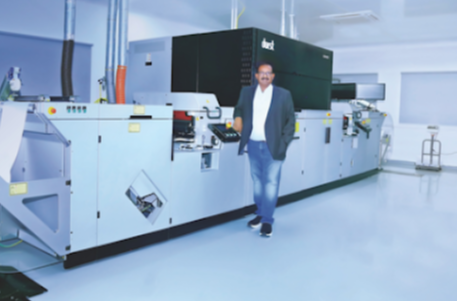Integrating Digital Printing with Embellishment Techniques: Revolutionizing Packaging Design for Flexible Packaging

In the dynamic world of packaging design, innovation is key to capturing consumer attention and driving brand engagement. Digital printing technology has emerged as a game-changer, offering unprecedented flexibility, speed, and customization in packaging production. When coupled with embellishment techniques, such as foiling, varnishing, and embossing, digitally printed for flexible packaging becomes a canvas for creativity and brand storytelling. This article explores the transformative impact of combining digital printing with embellishment techniques in the realm of packaging design, with a focus on flexible packaging.
The Rise of Digital Printing for Flexible Packaging:
Digital printing has revolutionized the packaging industry by eliminating the constraints of traditional printing methods, such as offset and flexography. Unlike conventional techniques that require costly setup processes and long lead times, digital printing enables on-demand production, short print runs, and rapid turnaround times. This agility is particularly advantageous for flexible packaging, which caters to diverse product formats, sizes, and designs.
Customization and Personalization:
- Digital printing empowers brands to create highly customized and personalized packaging solutions tailored to specific target audiences or promotional campaigns. Variable data printing capabilities enable the incorporation of unique elements, such as individualized graphics, text, or QR codes, directly into the packaging artwork. This level of personalization enhances brand-consumer interactions and fosters brand loyalty.
Vibrant Color Reproduction:
- The vibrant color reproduction achievable through digital printing enhances the visual impact of flexible packaging, making products stand out on crowded retail shelves. With advanced color management technologies, brands can achieve consistent color accuracy across different substrates, ensuring brand integrity and recognition. This capability is especially crucial for conveying brand identity and communicating product attributes effectively.
- Read more Exploring the Features of Armored Chevrolet Suburban
3. Rapid Prototyping and Iterative Design:
Digital printing facilitates rapid prototyping and iterative design cycles, enabling brands to experiment with various packaging concepts and iterate quickly based on feedback or market trends. By reducing time-to-market and minimizing upfront costs associated with traditional prototyping methods, brands can accelerate product launches and stay ahead of competitors in dynamic market environments.
4. Environmental Sustainability:
Compared to conventional printing processes, digital printing for flexible packaging offers significant environmental benefits, including reduced waste, energy consumption, and carbon footprint. With no need for printing plates or excess ink, digital printing minimizes material waste and resource consumption, aligning with sustainability objectives and consumer preferences for eco-friendly packaging solutions.
Embellishment Techniques for Enhanced Visual Impact:
While digital printing excels in delivering high-quality graphics and imagery, embellishment techniques further elevate the visual appeal and tactile experience of flexible packaging. These techniques add depth, texture, and luxury finishes to packaging designs, enhancing brand perception and shelf presence.
Foil Stamping:
Foil stamping involves applying metallic or holographic foil accents to specific areas of the packaging, creating eye-catching highlights and reflections. This embellishment technique adds a touch of elegance and sophistication to product packaging, making it ideal for premium or luxury brands seeking to differentiate themselves in the market.
Varnishing and Coating:
Varnishing and coating techniques involve applying clear or tinted coatings to the packaging surface, enhancing its durability, glossiness, and tactile properties. Gloss, matte, and soft-touch finishes can be achieved, allowing brands to tailor the packaging texture to suit the product type and consumer preferences.
Embossing and Debossing:
Embossing and debossing techniques create raised or recessed patterns on the packaging surface, adding dimensionality and tactile interest to the design. These techniques enhance brand logos, text, or decorative elements, creating a memorable tactile experience for consumers interacting with the packaging.
Spot UV Printing:
Spot UV printing selectively applies a glossy UV coating to specific areas of the packaging artwork, creating contrast and visual interest. By combining matte and glossy finishes, brands can create striking visual effects and draw attention to key design elements, such as logos, product features, or call-to-action messages.
Conclusion:
The integration of digital printing with embellishment techniques represents a paradigm shift in packaging design, offering brands unprecedented creative freedom, customization, and visual impact. For flexible packaging applications, this synergy enables brands to create captivating designs that resonate with consumers, communicate brand identity, and drive purchasing decisions. By embracing innovation and leveraging the capabilities of digital printing and embellishment technologies, brands can unlock new opportunities for differentiation, sustainability, and brand storytelling in the competitive landscape of packaging design.







